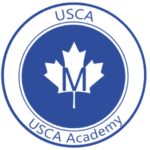| Course Type : | Open |
| Credit Value : | 1.0 |
| Prerequisite : | None |
Course Description
Healthy Active Living PPL20: This course emphasizes regular participation in a variety of enjoyable physical activities that promote lifelong healthy active living. Student learning will include the application of movement principles to refine skills; participation in a variety of activities that enhance personal competence, fitness, and health; examination of issues related to healthy sexuality, healthy eating, substance use and abuse; and the use of informed decision-making, conflict resolution, and social skills in making personal choices.
Outline of Course Content
Unit
Titles and Descriptions
Time and Sequence
Unit 1
Interactive Games and Physical Fitness
Students develop an appreciation for the sacredness of the human body. Through participation in various interactive games, students demonstrate respect for the rights, responsibilities and contributions of both self and others, e.g., modelling positive behaviour, encouraging others. Students assess their personal fitness levels, design and/or review and make appropriate revisions to their personal programs for daily, health related fitness activities. Students participate actively and safely in vigorous physical activities designed to maintain or improve personal fitness levels. Community resources and career opportunities are explored.
33 hours
Unit 2
Nutrition
In this unit, students explain how healthy eating fits into a healthy lifestyle, e.g., risks of dieting and other eating behaviours. Students analyse the relationships among healthy eating, physical activity, and body image. As an extension to their personal fitness programs, students examine personal eating patterns and develop strategies for improvement. Students identify the relative effectiveness of different types of resources and support services related to healthy eating, e.g., health unit, sport nutritionist.
12 hours
Unit 3
Conflict Resolution and Anger Management
Students demonstrate an understanding of the varied dynamics of conflict, e.g., the context, escalators, perception. Students have the opportunity to discuss and analyse various conflict situations and develop strategies for dealing with and managing anger. Methods of effective communication and mediation will be explored. Methods of delivery will include active participation, as well as classroom-based instruction
7 hours
Unit 4
Healthy Lifestyle Choices: Growth and Sexuality, Substance Use and Abuse
Throughout this unit the decisions students make regarding their sexuality and the use of alcohol, tobacco, and drugs will be examined. Students demonstrate an understanding of the effects of their choices as they relate to sexual intimacy, e.g., STDs, HIV/AIDS, and identify community services related to sexual health concerns. Students explore factors that lead to substance dependency and demonstrate an understanding of the issues and coping strategies related to substance use and abuse. Emphasis is placed on the legal, physiological, and sociological impact of substance use and abuse.
8 hours
Unit 5
Outdoor Education
Through a variety of outdoor pursuits students will discover and appreciate the environment as a source of recreation and physical fitness. The importance of safety and emergency procedures related to recreational outdoor activities will be discovered and applied. Through topics such as orienteering, hiking/backpacking, rock climbing, mountain biking, canoe tripping, snow shoeing, and cross-country skiing, students will come to cherish and respect the sacredness of the environment as an outlet that promotes lifelong participation.
12 hours
Unit 6
Individual and Team Activities
In this unit students participate regularly in a variety of enjoyable individual/team activities to enhance overall fitness, health, movement skills and personal competence. Students describe appropriate movement principles in learning and refining isolated or combined movement skills, e.g., an overhead serve in volleyball, requires the use of all joints. Throughout this unit students are given opportunities to demonstrate an understanding of specific rules, and describe safety guidelines to maximize performance and participation in recreation and sport activities. Students build their level of fitness through interaction with others.
33 hours
Final Evaluation
Fitness Blast Assignment worth of 10%
The final assessment is a two-hour exam on Nutrition worth 20% of the student’s final mark.
3 hours
2 hours
Total
110 hours
Teaching & Learning Strategies includes:
- modeled, shared and guided instruction
- Video-conferences and gym time Brainstorming
- Independent study/ health log Practical experience
- Cooperative group learning
- Portfolio Role Playing and Case scenarios
- Experiential learning
- Independent research Teacher analysis
- Active participation Presentations
- Robust thinking (critical analysis and reflection).
- Internet and multimedia (ie, human body) Use of game console (Wii console; Wii fit)
- other agencies presentations
Healthy Active Living PPL20
Assessment and evaluation will follow the Ministry of Education’s Growing Success document. Assessment is a systematic process of collecting information or evidence about a student’s progress towards meeting the learning expectations. Assessment is embedded in the instructional activities throughout a unit. The expectations for the assessment tasks are clearly articulated and the learning activity is planned to make that demonstration possible. This process of beginning with the end in mind helps to keep focus on the expectations of the course. The purpose of assessment is to gather the data or evidence and to provide meaningful feedback to the student about how to improve or sustain the performance in the course. Scaled criteria designed as rubrics are often used to help the student to recognize their level of achievement and to provide guidance on how to achieve the next level. Although assessment information can be gathered from a number of sources (the student himself, the student’s course mates, the teacher), evaluation is the responsibility of only the teacher. For evaluation is the process of making a judgment about the assessment information and determining the percentage grade or level.
| Assessment FOR Learning | Assessment AS Learning | Assessment OF Learning |
|---|---|---|
During this process the teacher seeks information from the students in order to decide where the learners are and where they need to go. | During this process the teacher fosters the capacity of the students and establishes individual goals for success with each one of them. | During this process the teacher reports student’s results in accordance to established criteria to inform how well students are learning. |
| Conversation | Conversation | Conversation |
Classroom discussion Self-evaluation Peer assessment | Classroom discussion Small group discussion Post-lab conferences | Presentations of research Debates |
| Observation | Observation | Observation |
| Drama workshops (taking direction) Steps in problem solving | Group discussions | Presentations Group Presentations |
| Student Products | Student Products | Student Products |
| Reflection journals (to be kept throughout the duration of the course) Check Lists Success Criteria | Practice sheets Socrative quizzes | Projects Poster presentations Tests In Class Presentations |
Healthy Active Living PPL20
The evaluation of this course is based on the four Ministry of Education achievement categories of knowledge and understanding (25%), thinking (25%), communication (25%), and application (25%). . The evaluation for this course is based on the student’s achievement of curriculum expectations and the demonstrated skills required for effective learning.
The percentage grade represents the quality of the student’s overall achievement of the expectations for the course and reflects the corresponding level of achievement as described in the achievement chart for the discipline.
A credit is granted and recorded for this course if the student’s grade is 50% or higher. The final grade for this course will be determined as follows:
- 70% of the grade will be based upon evaluations conducted throughout the course. This portion of the grade will reflect the student’s most consistent level of achievement throughout the course, although special consideration will be given to more recent evidence of
- 30% of the grade will be based on a final exam administered at the end of the The exam will contain a summary of information from the course and will consist of well-formulated multiple choice questions. These will be evaluated using a checklist.
Textbook
1-Glencoe Health: A Guide to Wellness, Glencoe McGraw-Hill (California, 1999)
2- Healthy Active Living – Keep Fit, Stay Healthy, Have Fun, Thompson Educational Publishing: Toronto 2007
Potential Resources
Various internet websites
- www.hc-sc.gc.ca
- http://www.ophea.net/
- http://www.dieticians.ca/
- www.cahperd.ca
- www.cmha.ca
- http://www.canadian-health-network.ca
Frequently Asked Questions (FAQ)
Students will engage in interactive games, outdoor pursuits, individual and team sports, and fitness programs to improve physical health and personal skills.
The course explores topics like nutrition, healthy eating, sexuality, and substance use, emphasizing informed decision-making and its impact on well-being.
Yes, students complete a “Fitness Blast Assignment” worth 10% of their final grade and take a final exam on nutrition worth 20%.
Students learn about conflict dynamics, anger management, and communication strategies through active participation and classroom instruction.
Key resources include textbooks such as Glencoe Health: A Guide to Wellness and Healthy Active Living – Keep Fit, Stay Healthy, Have Fun.

